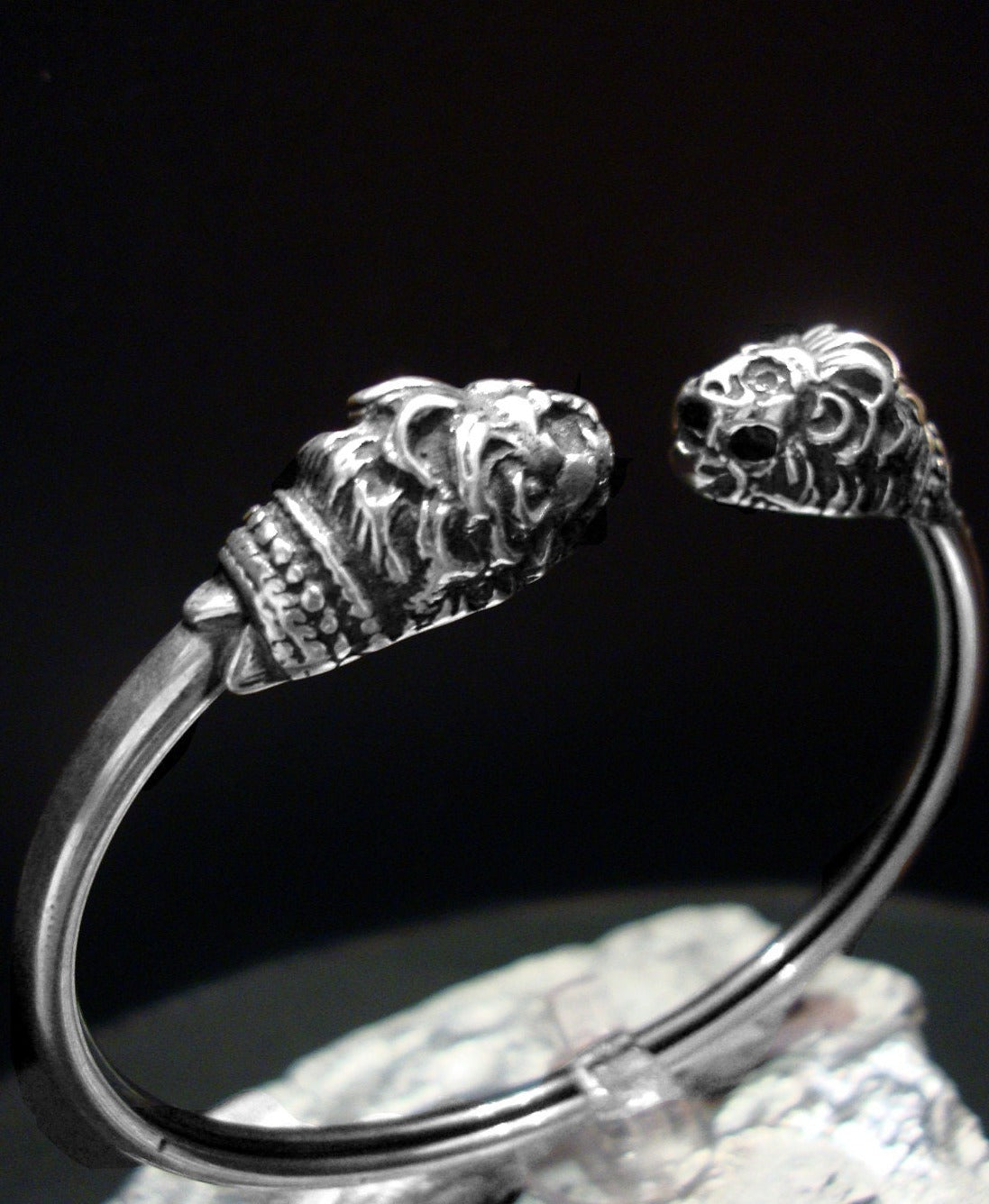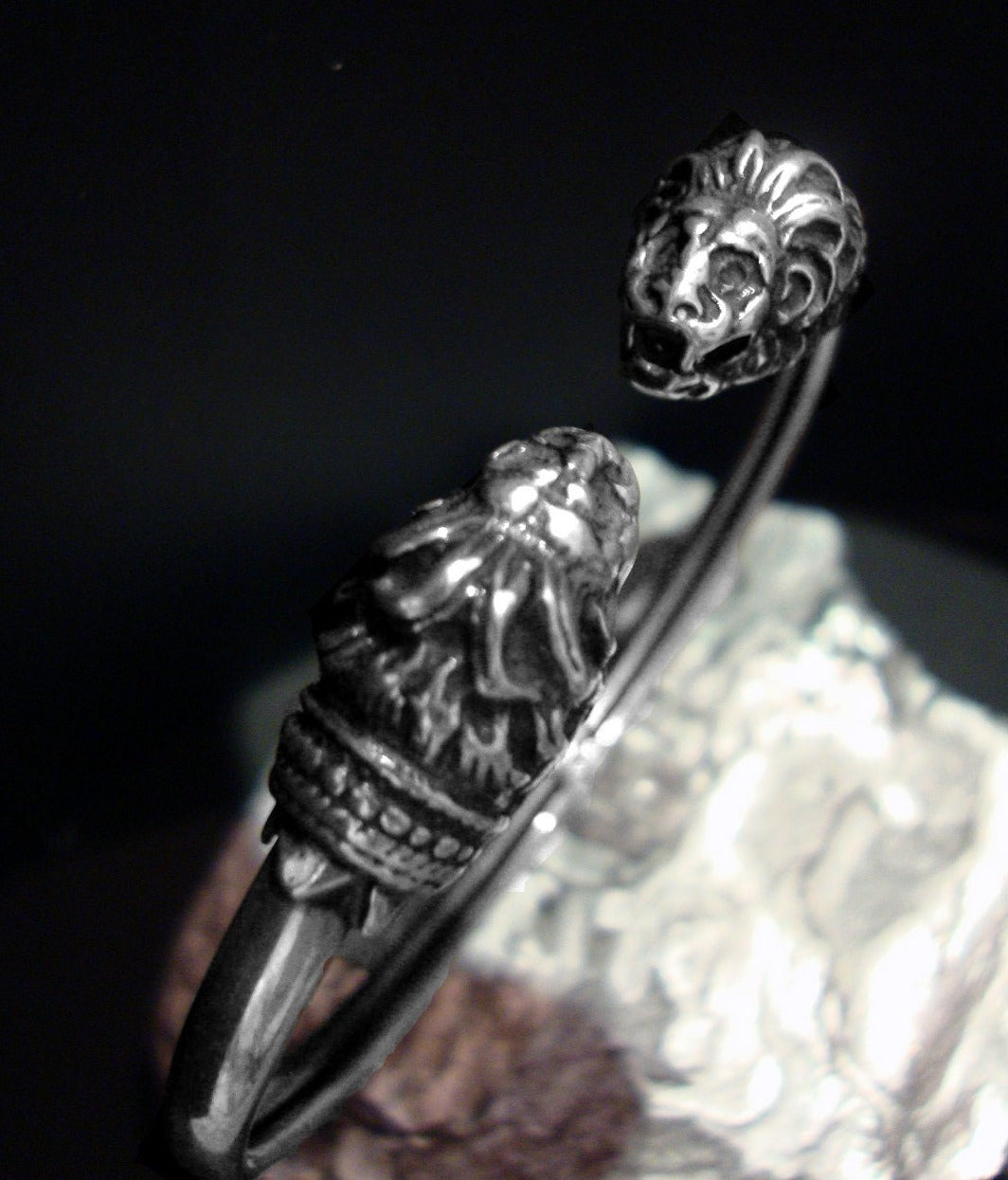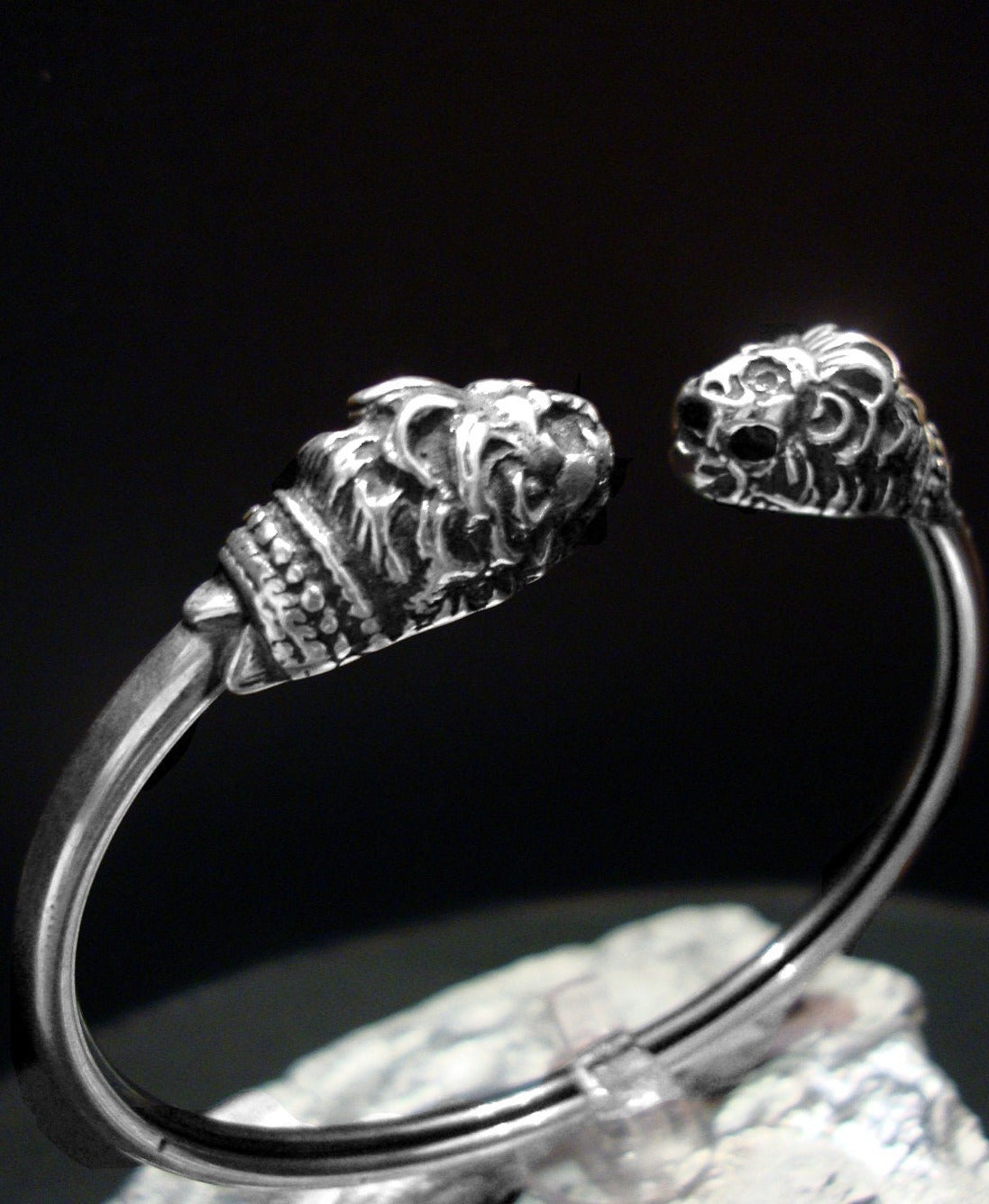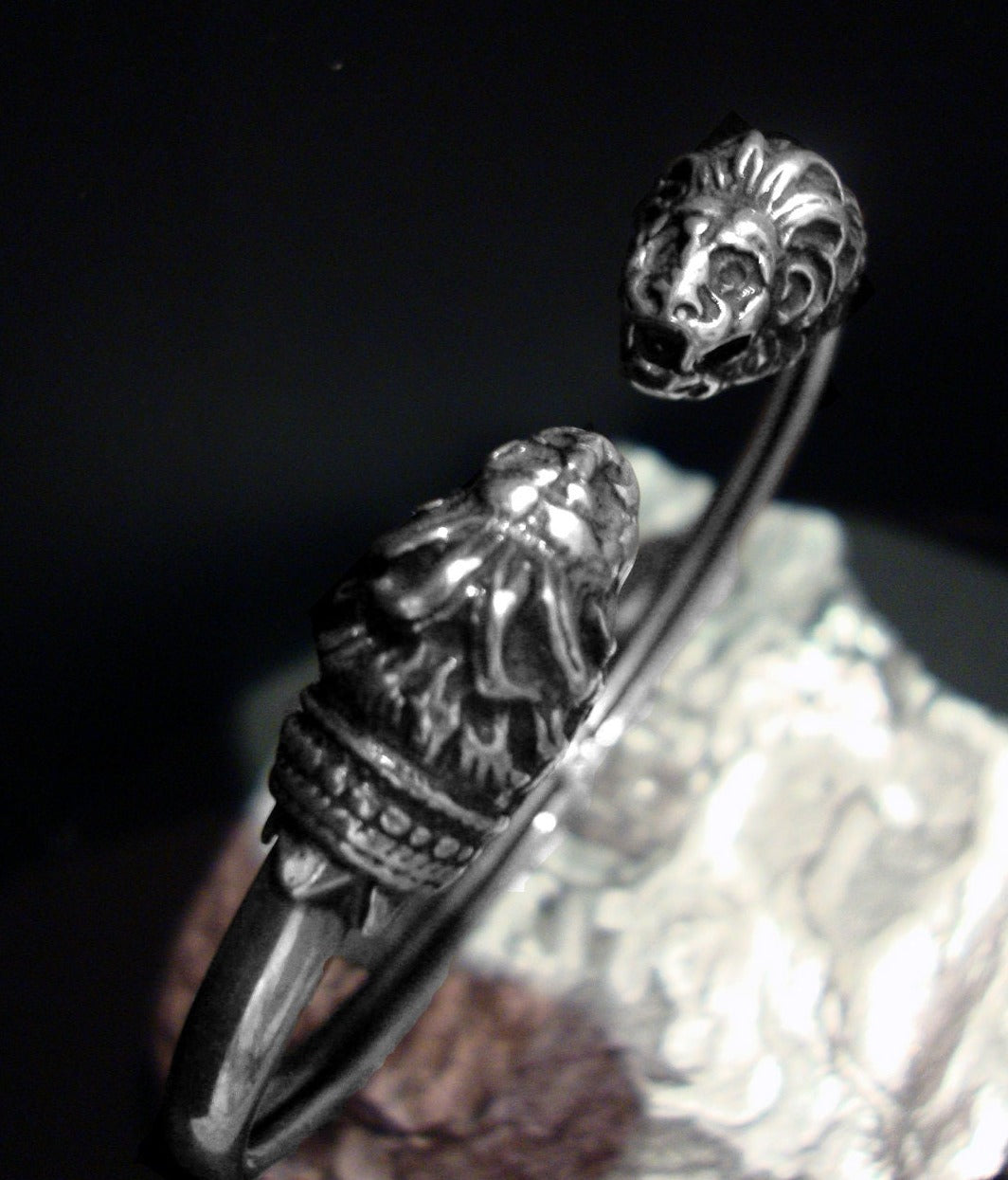Sirioti Jewelry
Sterling Silver 925 Greek Double Lions Bangle Bracelet - Lion Head Bracelet - Löwenkopf Griechische Silber Armband - Bracelet à tête de lion
Sterling Silver 925 Greek Double Lions Bangle Bracelet - Lion Head Bracelet - Löwenkopf Griechische Silber Armband - Bracelet à tête de lion
Kan beschikbaarheid voor afhalen niet laden
Greek Lion heads handmade bangle bracelet made of Sterling Silver 925
Description
---------------------------------------------------------------------------------
- Sterling Silver 925
- Bangle Bracelet
- Inner Circumference : 18.5 cm - 7.21 inches
- Lion Head Size : 11 x 20 mm , 0.42 x 0.78 inches
- Stamped 925
- Made In Greece
- Shipping via Registered Mail with tracking number Worldwide
.European Lions were an important aspect of Ancient Greece. They were mostly found in northern Greece, in Macedonia, but also as far south as Central Greece. They are considered to be part of the Asiatic lion family, although some think that they were the last remnants of the cave lion. They were around the same size as the modern African Lion and weighed 180kg to 200kg. The European lion lived in temperate forests near the Mediterranean sea and hunted animals such as the wisent (European Bison), elk, aurochs (European cattle), deer and other European animals.
In Ancient Greece Lions symbolized power and wealth and were featured prominently in many ancient Greek myths. The Nemean lion was famously slayed by Heracles, which was the first labor that Heracles had to perform. It was said that the lions fur was impervious to attacks because it was made of gold and its claws were sharper than mortal swords and could cut through armor. Heracles managed to kill the Nemean lion by strangling it and afterwards wore the lions skin .
Lions were depicted in buildings, statues, coins and artifacts across all the Greek-city states. The Lions gate to the citadel of Mycenae had two confronted lionesses. The Terrace of the Lions on the island of Delos contained nine to twelve squatting marble guardian lions. These lions had their mouths open, as if roaring, and inspired fear in the warshippers that came to the island. In about 300 BC, the town of Thebes erected a giant stone lion at the burial site of the Sacred Band of Thebes who died at the hands of Philip II of Macedon and his army in the Battle of Chaeronea in 338 BC. Alexander the Great was usually depicted wearing a lions head . He wore the lion skin, just like Heracles did, to point out that he was of Dorian descent, just like Heracles. Alexander was also depicted in scene hunting a lion (picture above) from Pella.
Greece is an unimaginable place where one would think a lion to have once lived. But they did. And for many years until its extinction sometime between 80-100 AD because of excessive hunting and over-exploitation. Lions were also used in the Roman arenas where they would fight against other animals, such as tigers and bears further helping bring their ultimate demise. A once mighty animal that lived in Greece had become extinct because of human intervention.


-
Free Shipping
Free shipping worldwide by Registered Post mail & tracking number.


